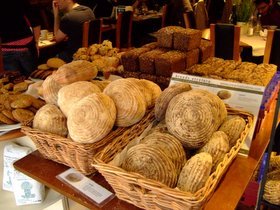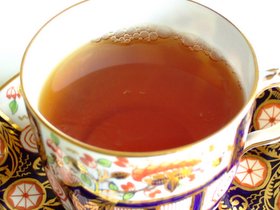
Kurt Anderson at Breads Etcetera told me that the flour they use comes from Stoates at Cann Mills, Shaftesbury in Dorset. This is not too far away from me, in fact it’s just the place for a spot of lunch on a nice day, one of which we had today.
Shaftesbury has great charm; it was the setting for one of the most famous commercials of all time, the Hovis ad with the little baker’s boy pushing his bike up a cobbled hill. The voiceover, with its northern accent, suggested a location in Yorkshire, but the film was shot, by Ridley Scott, in Shaftesbury, on Gold Hill. Just round the corner, in the High Street, is The Mitre. This pub, with wooden floors and bar stools and people doing the crossword, must have one of the best views in the county. I had a pint of prawns and good bread with unsalted butter.
Just round the corner, in the High Street, is The Mitre. This pub, with wooden floors and bar stools and people doing the crossword, must have one of the best views in the county. I had a pint of prawns and good bread with unsalted butter. Cann Mills, a mile outside Shaftesbury, is a water mill set in the most beautiful tranquil surroundings. On a bright spring day the blossom is blowing from the trees across the mill pond. Michael Stoate emerges from the mill with flour dust veiling his face, a huge smile and a warm handshake. It is half term and his children are around – what a place to grow up.
Cann Mills, a mile outside Shaftesbury, is a water mill set in the most beautiful tranquil surroundings. On a bright spring day the blossom is blowing from the trees across the mill pond. Michael Stoate emerges from the mill with flour dust veiling his face, a huge smile and a warm handshake. It is half term and his children are around – what a place to grow up.
Michael took over the mill from his father. Milling has been the family business since 1832; Cann Mills can trace its history back to the Domesday Book and now produces stoneground flour with the help of the 19th Century waterwheel.
I bought several bags of flour and I can’t wait to taste the bread.
There are breadmaking courses at Cann Mills too, run by Paul Merry. Paul is an Australian who worked for ten years at The Village Bakery, in Melmerby, Cumbria, and I believe he built the wood fired oven there. He specialises in sourdough and runs one, two and three day courses in the delightful Dorset countryside. They now have a new wood fired oven too.









































